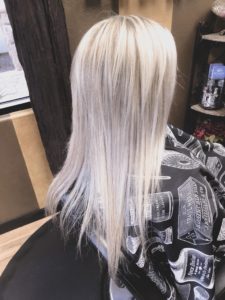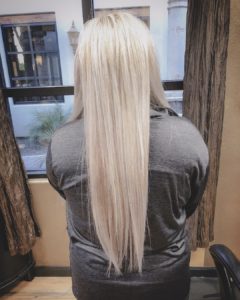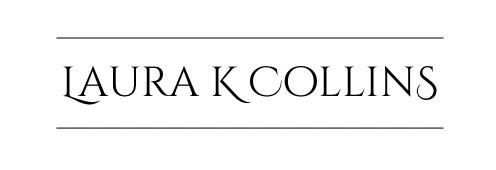5 Of The Best Solutions For Thinning Hair
We have all had that moment in the shower after you use conditioner when you realize that you’re loosing a lot of hair.
Panic overwhelms and you immediately think to yourself “oh no my hair is thinning!”
While this may be true, it also may be an exaggeration. Let’s first take a closer look at some facts before jumping to the conclusion that your hair is actually thinning.
The life cycle of a hair strand
Everyone looses hair, everyday. On average each person looses roughly 80-100 hairs per day! That’s coming from the 100,000 that are on your head.
People with thick hair will loose a lot more than this, and those with thin hair not as much. You may also lose more one day than the next.
When a hair falls out, another one replaces it and that is the life cycle of a hair strand.
When you shampoo, condition, and brush your hair, you are removing those loose hairs that have already detached from the hair follicle. This will cause you to have a clump of hairs fall out when you are doing any one of those things.
Before determining if your hair is thinning and finding solutions if it is, it’s important to first understand how hair growth works. You need to have a better understanding of the hair growth stages before trying to treat the problem.
Hair growth stages
Believe it or not, not all hairs on your head are growing at the same pace at the same time. All hair goes through four growth stages; anagen, catagen, telogen, and exogen.
1. Anagen hair growth stage
Anagen is the growing stage of a hair strand. It is where the hair is growing from the inner hair follicle. This is what determines how long your hair will get. This stage lasts on average of 4-5 years, but can range all the way from 2-7 years.
Do you ever wonder how some people can grow their hair extremely long, while others cant? This is the hair growth stage that makes that possible.
2. Catagen hair growth stage
This phase is also known as the transition phase. It is much shorter than the previous stage, lasting at only about 10 days.
In this stage, your hair follicle will shrink and detach itself underneath the scalp so that it stops growing.
3. Telogen hair growth stage
The telogen stage of hair growth is also known as the resting phase. This stage usually lasts around 3 months, but can be more or less depending on person to person.
Typicaly anywhere from 10-15% or so of your hair is in this stage at one time. Since the hair follicle detached in the last phase, a new one is being formed underneath beginning the anagen phase during this stage.
Hair in this phase will still move its way underneath your scalp, so it does appear that it is still growing, but in reality it is just moving through the stages, not actually getting longer.
4. Exogen hair growth stage
Exogen is the final stage of hair growth and when the hair falls out. This is where the hair has completely detached from the scalp and the new hair underneath continues to grow in its place.
You may have more hairs on this stage at one time than another, so that is why sometimes it feels like you are loosing a lot of hair and other times not so much.
Everyone is different and we all have different amounts of hair in certain stages at a time. There are also many factors that can trigger a shift in the stages.
Is my hair thinning?
Okay so, is your hair thinning? I’ve had many clients mention that they notice they are loosing a significant amount of hair while brushing and washing. This is totally normal.
The only time you should be concerned is when you feel that you have significantly less hair on your head than you did previously, or if you notice actual chunks of hair coming out.
If this is the case and you do believe that you have thinning hair, it could be due to a number of different reasons that we’ll cover below.
What causes hair to thin?
I always begin to ask my clients what has changed in their life since they’ve noticed the changes in their hair. Specifically thinking back 3-9 months before the hair began to thin.
Stress, hormones, surgery, quitting smoking, loosing a job, pregnancy, depression, hormones, thyroids, medications, diet, hereditary factors & genetics (sorry men :/), and many other factors are all reasons why someone may begin to loose hair.
I also want to point out that your hair loss typically won’t happen until several months after the cause due to the hair growth stages.
For example, undergoing a surgery may result in hair loss 6 months after the fact. The hair follicle will detach itself under the skin at the time of the event, stress, or whatever it may be. But the hair will not actually shed because it is still in the telogen or resting phase.
Keep this in mind, and really think back to what you may have went through months ago. If nothing that you know of has changed or happened, it may be a good idea to go see your doctor.
I have caught a client’s thyroid getting out of whack by the changes in her hair density, texture, and wave pattern. It went from being stick straight her entire life, to getting super thick with a crazy wave pattern on only the right side of her head. She ended up needing to have a thyroid surgery shortly after noticing these changes.
So if you do notice that something is up, please go get it checked out by your doctor. It could be a sign that something more serious going on that your body is trying to tell you.
Can hair grow back after thinning?
Yes, hair can indeed grow back after thinning. But again, this is all dependent on the reason for the hair loss to begin with and how long it’s been since the thinning has begun.
If your hair started thinning because of a surgery or stress, then it will grow back after the hairs underneath have replaced it and the stress has decreased. Be patient and understand the stages of hair growth to know when to expect it to come back.
If your hair loss is from genetics, or possibly even a medication that you MUST take, it is possible that it will not grow back on its own. I recommend going to your doctor, or even a med spa to determine exactly what has caused your hair loss to determine what options you have for re-growth.
What really works for thinning hair?

***Since I’m sharing the products that I love to use with you guys, my posts may include affiliate links to these products. If you take action and purchase a product through clicking one of my links, I’ll make some commission money from it at no extra cost to you. This enables me to be able to continue giving you awesome hair tips, so thanks! ***
The best products and procedures for thinning hair
- Thickening and coloring hair & scalp products
- Vitamins
- Topical medicated products
- Medical procedures
- Hairpieces and extensions
How to stop thinning hair
There is no cure-all best treatment for thinning hair. It is important to understand your exact situation in order to solve your problem. Below I’ve listed 5 solutions to thinning hair that can be used to mask the symptoms and possibly even grow your hair back
Thickening and coloring hair & scalp products
This is generally the first step to take when you notice that your hair is beginning to thin. These can also be carried on and used in conjunction with the other options in the following sections.
These products will not put a halt to your hair from thinning more nor will they re-grow your hair; they merely mask the appearance of thin hair.
- Thickening Shampoo and Conditioner by Paul Mitchell – Shampoo and conditioner that will help give a little more thickness and body to fine and thin hair. I love the smell of this too!
- Thickening Spray gel by aquage – This product adds thickness to fine or thin hair while strengthening each strand. It’s ideal for use when hair is wet before styling, and can add some killer volume to limp hair. It also works great on men’s hair as well.
- Root Concealer Spray – This spray is technically made to cover gray roots as they grow in, but also works great for spraying on your scalp if you can see it through your hair. The matte dry spray can also add a little thickness and texture to thin hair.
If you’d like a more detailed list of products I recommend, visit my post here.
Vitamins that can stop thinning hair
There are a number of different vitamins that you can take to improve and stimulate hair growth from the inside out. Biotin, pre-natal vitamins, collagen, or omega-3 all have been known to aid in hair growth.
Be aware when taking these vitamins because they affect ALL of your hair, not just what’s on your head. Your nails will grow quicker, and your skin will be softer.
Personally I have oily skin, so when I take any of these they make me break out pretty bad. But you can try counter-acting this with vitamin A or a retinoid treatment.
Always remember that each person is different, and some methods may work well for some and not for others. Depending on why you are experiencing hair loss is a huge factor. I would suggest trying one vitamin for 3-6 months, and if you aren’t seeing any results then switch it out for another.
Topical medicated products for thinning hair
The only topical chemical that I have ever seen to be proven to work against thinning hair is minoxidil. This is the chemical that is in Rogaine.
These types of products work only if you use them religiously twice a day without ever skipping a day. If you stop using them it will stop working. It also takes several months in order to see any progress at all; so don’t give up after a few weeks of using.
There are many off-brands of Rogaine, and other products that are “proven” to grow your hair back. I recommend checking the ingredients label to be sure that minoxidil is included before purchasing. You can get these online or at most drugstores.
Medical procedures for thinning hair
If money is not a problem, medical procedures for hair loss can be extremely beneficial. The medical options for hair loss include: hair transplants, laser hair treatments, and PRP (platelet-rich plasma) injections.
- Hair transplants are typically used by men with male-pattern baldness. This is a form of plastic surgery, and must be performed by a doctor. The surgeon will take hair follicles from an area that is generally resistant to balding such as the sides or back of the head, and will relocate those follicles to the balding spots on top of the head. This is a permanent solution. It is the most expensive treatment option, but also the most effective.
- Laser hair treatments and PRP work in very similar ways in that they attack the dead/dying cells in the hair follicle and regenerate them. Laser hair treatments use lasers to regenerate the dead cells.
- PRP is similar to stem cells; a vile of your own blood is drawn, the platelet-rich plasma is extracted from the blood in a machine, and it is then injected into the areas of your scalp that need increased hair growth. The plasma heads to those dying cells and begins to regenerate them.
I have seen all of these methods work for some people and not work for others. Just remember that everyone is different and it all depends on the reason for the hair loss.
Hairpieces and hair extensions for thinning hair
If all else fails and/or you are not looking to spend big bucks on medical treatments to restore hair growth, try hairpieces or hair extensions!
Extensions or a halo will add fullness and length, whereas a topper or wig will cover the top of your head if you are worried about your scalp showing.
I always recommend using 100% human hair, you get what you pay for when purchasing hair. You want something that is going to look real, natural, and that you can style the same as your own hair with coloring and heat tools.
I also want to add that I recommend staying clear of using clip-in hair extensions on a regular basis if you are already experiencing hair loss. The clips and weight of the hair put added stress on your already thin and fragile hair, and can even make thinning worse. I have seen clip-ins cause bald spots!
My favorite type of extensions are tape-ins. For thin and fragile hair I only sandwich the section of hair with one extension instead of two so that not a lot of weight is put on your hair. Your extension trained stylist will know more of what that means.
There are many other types of hair extensions such as fusions, hand tied wefts, micro-beads, braided, and others. I recommend finding a stylist that specializes in extensions to find the best option for you and your hair. This may even mean going to a separate stylist for extensions than for hair color or cuts.


What NOT to do for thinning hair
If you are experiencing hair loss then there are a few things you may immediately think of to try and hide it but may end up making matters worse!
I do not recommend doing any of the below listed “solutions” if you have thinning hair.
1. Darker hair color
Darker hair color is typically everyones first go-to to hide hair loss. But in reality this actually makes thinning hair more visible.
When the hair is darker than the color of the scalp, the lighter scalp shines through the hair and appears even thinner than it already is.
A lighter hair color is better because there is not as much contrast between the hair and the scalp.
2. Tight fitted hats and headbands
Hats and headbands will hide the hair loss, but they are also putting stress on the hair that is left.
Anything that puts tension on the hair such as a hat, headband, or even tight ponytails is going to end up doing more harm than good.
If you want to wear a loose fitting hat or headband that is totally fine, just pay attention to the tension on your hair/head and keep it on the looser side.
3. Long hair/combover
Ah the combover. This section is mostly for men with male pattern baldness, but can apply to women as well.
When your hair is thinning it can be hard to agree to cut it short because you don’t want to let go of the hair that you still have left.
I get that, but you get to a point where trying to hide it will do you no good.
Keeping the hair shorter and thinned out on the full areas of the head (sides and back) will mask the appearance of how thin it is in the thin areas.
Men, keep your sides short and the top not too long. I like to thin out the sides so that it when it grows back you don’t end up with poof on the sides and nothing on top.
Conclusion
On average, we lose 80-100 hairs a day from the roughly 100,000 on our head at a time.
Hair grows in four stages. Anagen is the growth stage, catagen is the transition or internally detaching stage, telogen is the resting phase, and exogen is the external detaching phase where the hair falls out.
Hair can thin for many different reasons. If you notice the hair on your head being noticeably thinner, think back to life events in the past 3-9 months. You should also take a trip to your doctor and dermatologist to determine why your hair is thinning. Depending on what is causing the hair loss will determine if and when it will grow back.
5 products and procedures to combat thinning hair are:
- Thickening and coloring hair & scalp products
- Vitamins
- Topical medicated products
- Medical procedures
- Hairpieces and extensions
If your hair is thinning, avoid:
- Darker hair color
- Tight hats and headbands
- The combover
Follow the tips I mentioned above if you are beginning to notice any thinning hair, and I always recommend popping into the doctor to make sure that nothing serious is going on that your body is trying to tell you.
If you have any further questions for me on this topic, be sure to leave them for me in the comments. And as always, Have A Good Hair Day!
Last updated 09/11/2023



Comments